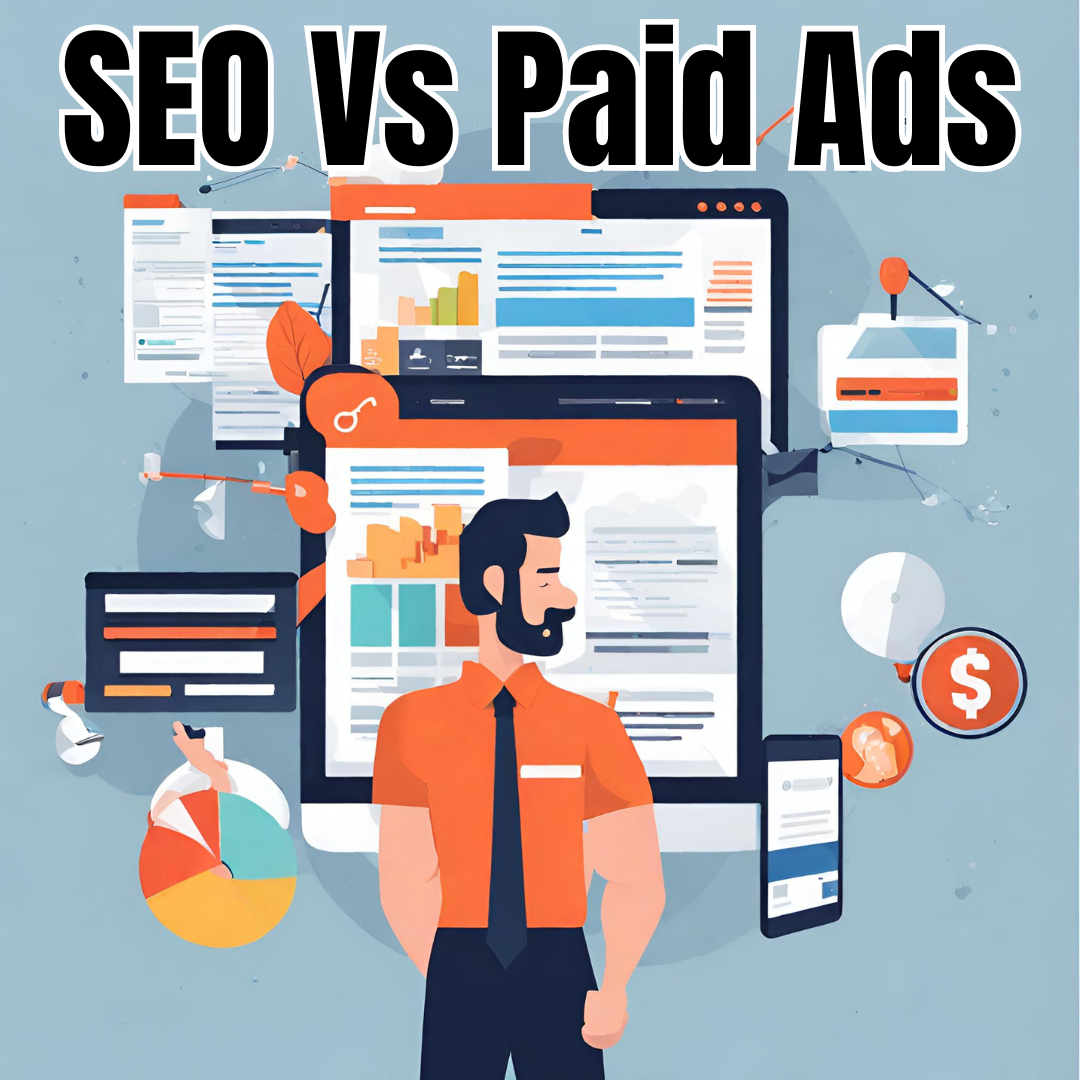Table of Contents
Introduction
In a perfect world, small business owners would have a marketing budget for both SEO and Google Ads. However, in reality, most small businesses face tight budgets and have to make a decision on which strategy to prioritize. This article aims to provide the knowledge needed to make an informed decision about whether to invest in SEO or paid ads for your business.
What Is SEO?
SEO, or search engine optimization, is the practice of optimizing a website to improve its visibility on search engine results pages. When a website is built, search engines like Google will usually find and index it. However, without optimization, there is no guarantee that the website will show up for relevant searches.
For example, if you’re a landscaper who also offers snow removal services in the winter, your website may not rank for snow removal searches if it only focuses on landscaping. By creating a dedicated service page for snow removal and optimizing it with relevant keywords, you increase the chances of appearing in search results.
SEO involves both on-page and off-page optimization. On-page optimization focuses on optimizing the content and structure of your website, while off-page optimization involves building backlinks from reputable sources and maintaining an active online presence.
Google also values technical factors such as website safety, usability, loading speed, and error-free functionality. By following SEO best practices, you can improve your website’s chances of ranking well on Google.
While there are no guarantees with SEO due to the ever-changing algorithms and rankings, investing in SEO can increase the likelihood of ranking well and driving organic traffic to your website.
What Are Paid Ads?
Paid ads, specifically Google Ads (formerly known as AdWords), provide a way to bypass SEO and secure a top position on search engine results pages through paid placements. These ads appear above and below organic search results and are text-only, similar in format to organic results but labeled as ads.
Google Ads allow you to target specific search queries and reach a highly relevant audience. However, you have to pay for these ad placements and bid on keywords. There is no guarantee that your ad will always appear on the first page of search results, as competitors can outbid you. Google also assigns an Ad Quality Score to each ad, which, along with your bid, determines its placement on the page.
The Differences Between SEO and Paid Ads
SEO and paid ads have significant differences, making them suitable for different situations. While they can be used together as complementary strategies, it’s important to consider the pros and cons of each when making a decision.
The Pros of SEO
- Lower Cost: Generally, SEO costs less than Google Ads, making it more budget-friendly for small businesses. A one-time SEO project can still yield lasting results, while Google Ads require ongoing investment.
- Continuous Traffic Generation: SEO efforts, including quality content development, can drive continuous organic traffic to your website. While Google’s algorithms may change, focusing on quality content from trustworthy sources will always be valued.
- Larger Potential Audience: SEO allows you to target a broad audience, especially if you’re not limited to local customers. Organic search results generally receive more clicks than ads, providing an opportunity to reach a wider audience.
- Consumer Trust: Ranking highly in organic search results can enhance consumer trust. Some users prioritize organic results over ads and associate higher credibility with top-ranked websites.
- Asset Building: SEO is an asset that grows over time. By consistently investing in SEO, you can improve rankings, increase traffic, and generate more conversions. It’s a long-term strategy that adds value to your website.
The Cons of SEO
- Time to See Results: SEO takes time to generate results, and immediate outcomes may not be feasible for businesses with time-sensitive promotions or sales. SEO is a slow build, focusing on long-term success.
- Tracking Complexity: SEO tracking can be more complex than Google Ads tracking and may require additional technology investments. For local SEO, tracking phone calls from website traffic may require Dynamic Number Insertion (DNI) tracking to avoid interfering with local SEO efforts.
- Limits of Local SEO: Local SEO results are limited by proximity, even if your business serves a wide area. However, organic website listings can still be achieved.
- Limited Control: SEO is subject to Google’s algorithms and updates, which can impact rankings. Businesses relying solely on SEO are dependent on Google’s ever-changing landscape.
The Pros of Paid Ads
- Faster Results: Unlike SEO, paid ads can generate faster results. By targeting the right keywords and audience, you can see immediate traffic and a return on investment. Paid ads are suitable for businesses looking for quick results.
- Robust Tracking: Google Ads offers extensive tracking options to measure ad results. From website forms to e-commerce orders and calls, you can track conversions and assess the effectiveness of your ads.
- Targeted Advertising: Google Ads allows precise targeting of specific search queries, reaching consumers at the exact moment they are looking for your products or services. It offers highly targeted advertising opportunities.
The Cons of Paid Ads
- Higher Costs in Competitive Markets: Competitive niches and markets can drive up the cost per click in Google Ads. Precision targeting is essential to filter out irrelevant clicks and ensure a good return on investment.
- Not an Asset: Unlike SEO, paid ads are not an asset. Once you stop paying for Google Ads, the traffic generated by the ads ceases.
- Dependence on Budget: Paid ads require ongoing investment. If budget constraints arise, stopping ads means losing the traffic they generate.
When to Choose SEO
If your budget is limited, you already have an established business, and immediate results are not crucial, investing in SEO may be the right choice. SEO provides a continuous source of traffic, increases brand awareness, and builds long-term value for your website. While it takes time to see results, the investment in SEO can pay off over time.
When to Choose Paid Ads
Paid ads are ideal for newer businesses that prioritize sales and lead generation. If you can’t wait for the slow build of SEO and want faster results, Google Ads can deliver immediate traffic and measurable returns. However, it’s important to consider the costs, especially in competitive markets, and the fact that paid ads are not an asset.
Using SEO and Paid Ads Together
SEO and paid ads can be used together as complementary strategies. If you have the budget to invest in both, you can use paid ads to test which keywords convert best and then focus your SEO efforts on those keywords. This integrated approach maximizes the benefits of both strategies.
Conclusion
Choosing between SEO and paid ads depends on your budget, goals, and timeline. SEO offers long-term value, continuous traffic generation, and a larger potential audience. Google Ads provide faster results, precise targeting, and robust tracking. Consider your business needs, resources, and priorities to make an informed decision on which strategy to pursue. Remember, both strategies can be used together to maximize your online presence and marketing efforts.







